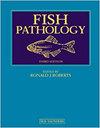Subsequent Changes in the Thymus of Ayu Plecoglossus altivelis Reared from Juveniles with Temperature-induced Differential Thymus Growth
IF 0.2
4区 农林科学
Q4 FISHERIES
引用次数: 1
Abstract
― The temperature of water used to rear juvenile stages of ayu affects the development of the thymus. However, subsequent differences in the thymus in adults after rearing juveniles at different temperatures are unclear. We analyzed thymus development of ayu grown at a constant water temperature of 15 ° C from juveniles reared at different water temperatures. Juvenile ayu weighed at 0.6 g and 1.4 g were reared at different temperatures (10 ° C, 12 ° C, 15 ° C, 18 ° C and 22 ° C) for 64 days and 54 days, respectively, and then held at 15 ° C for analysis of the thymus development. Thymus volume was measured by computed tomography and thymus development of experimental fish was evaluated as the ratio of thymus volume to body length. The thymus volume ratios of juveniles immediately after rearing at lower water temperatures (10 ° C, 12 ° C) were higher than in those reared at the higher temperatures (18 ° C, 22 ° C). These levels of thymus volume ratio were preserved in grown ayu continuously reared at 15 ° C. After the summer solstice, the thymus began to atrophy and no longer exhibited differences among the experimental groups. Thus the thymus formed at the juvenile stage retains its morphological properties until the summer solstice.温度诱导的不同胸腺生长幼畜胸腺的后续变化
-哺育幼鱼的水温会影响胸腺的发育。然而,在不同温度下饲养幼体后,成年胸腺的后续差异尚不清楚。研究了恒温15°C条件下不同水温条件下育成的阿育鱼幼体胸腺发育情况。体重分别为0.6 g和1.4 g的阿育鱼幼鱼分别在不同温度(10°C、12°C、15°C、18°C和22°C)下饲养64天和54 d,然后在15°C下饲养,分析胸腺发育情况。通过计算机断层扫描测量胸腺体积,并以胸腺体积与体长之比评估实验鱼的胸腺发育。低温(10°C、12°C)饲养后的幼鱼胸腺体积比高于高温(18°C、22°C)饲养后的幼鱼胸腺体积比,在15°C连续饲养的幼鱼胸腺体积比保持在这一水平。夏至后,幼鱼胸腺开始萎缩,各组之间不再有差异。因此,在幼年期形成的胸腺直到夏至仍保持其形态特征。
本文章由计算机程序翻译,如有差异,请以英文原文为准。
求助全文
约1分钟内获得全文
求助全文
来源期刊

Fish Pathology
农林科学-兽医学
CiteScore
1.40
自引率
16.70%
发文量
13
审稿时长
6 months
期刊介绍:
Information not localized
 求助内容:
求助内容: 应助结果提醒方式:
应助结果提醒方式:


